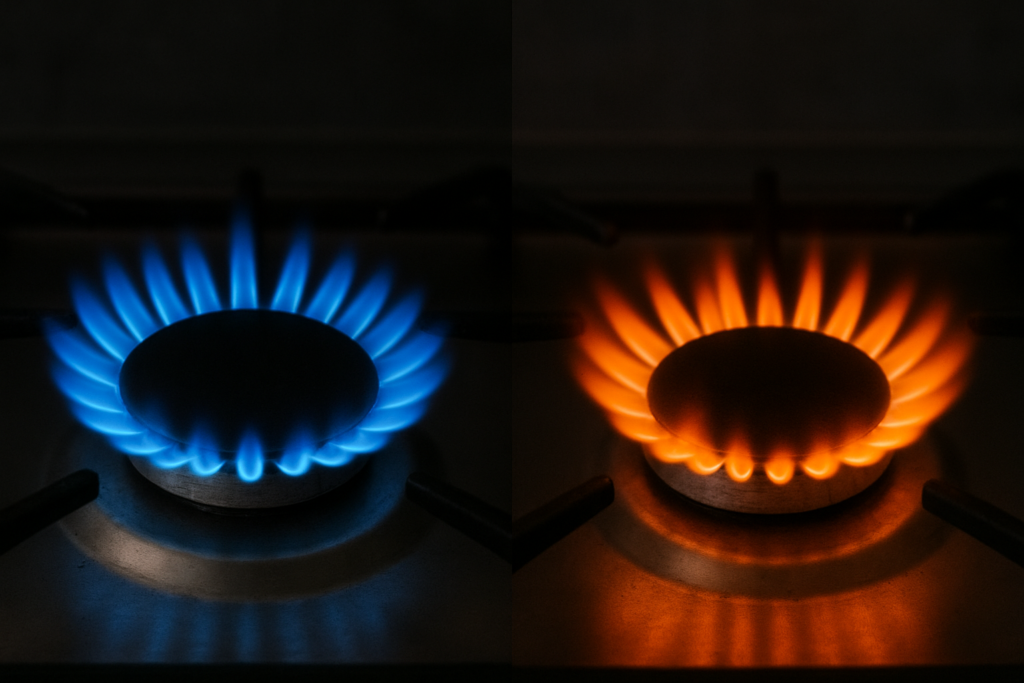Typically, a gas stove should emit a consistent blue flame. An orange or yellow flame indicates that the gas is not burning properly. This occurs when the air-to-fuel ratio is out of balance, which is frequently caused by:
- Clogged or unclean burner ports, which can obstruct airflow with dirt, grease, or food particles.
- Poor gas pressure: combustion is disrupted by either too much or too low gas flow.
- Nearby obstructions: turbulence can be caused by walls or objects that are too close to the burner.
- High humidity: The color of the flame is impacted by too much moisture in the air.
There is more to an orange flame than meets the eye. It may release carbon monoxide, which is hazardous to inhale.
Step 1: Clean and Inspect the Burners
A dirty burner is the most common cause of an orange flame. Gas ports can become blocked by dust, grease, and food spills.
- After turning off the stove, take off the burner caps.
- Scrub them clean with soapy water to remove any debris.
- Rinse, let dry well, and put back together.
Inspect for cracks or rust; repair any damaged burners as necessary.
Step 2: Check Gas Connections
Proper airflow can be prevented by loose or malfunctioning connectors. Examine the following:
- The flexible hose line,
- The regulator
- The shut-off valve
Verify that every connection is secure and free of leaks. Replace components right away if damage is suspected.
Step 3: Adjust Gas Pressure
For a clean, blue flame, gas stoves require balanced pressure.
- Cut off the main gas supply if your flame remains orange.
- Take out the access panel from the stove.
- To measure and modify gas pressure, use a regulator or pressure gauge.
- Test each burner until the flames turn blue.
Call a qualified technician for safety if you’re not comfortable making gas changes.
Step 4: Manage Indoor Humidity
Your flame may burn orange due to high humidity. To check levels, use an indoor hygrometer. If it’s higher than 50%, reduce it by:
- Using a dehumidifier
- Opening windows to allow for circulation
- Running a kitchen exhaust fan
Is an Orange Flame on a Gas Stove Dangerous?
Yes. A continuous orange flame could:
- Cause carbon monoxide (CO) to be released
- Leave soot residue on cookware
- Signal poor combustion that wastes gas.
Always take care of the problem right away. Seek expert appliance repair services if adjustments and cleaning are ineffective.
When to Call a Professional
DIY fixes solve many issues, but you should call a professional stove repair if:
- The flame remains orange after cleaning and adjustments
- You can detect gas leaks.
- Burners have rust or cracks.
- It appears that the gas line or regulator is damaged.
To assess gas pressure, replace defective parts, and guarantee safety, professional technicians are equipped with the appropriate equipment.


